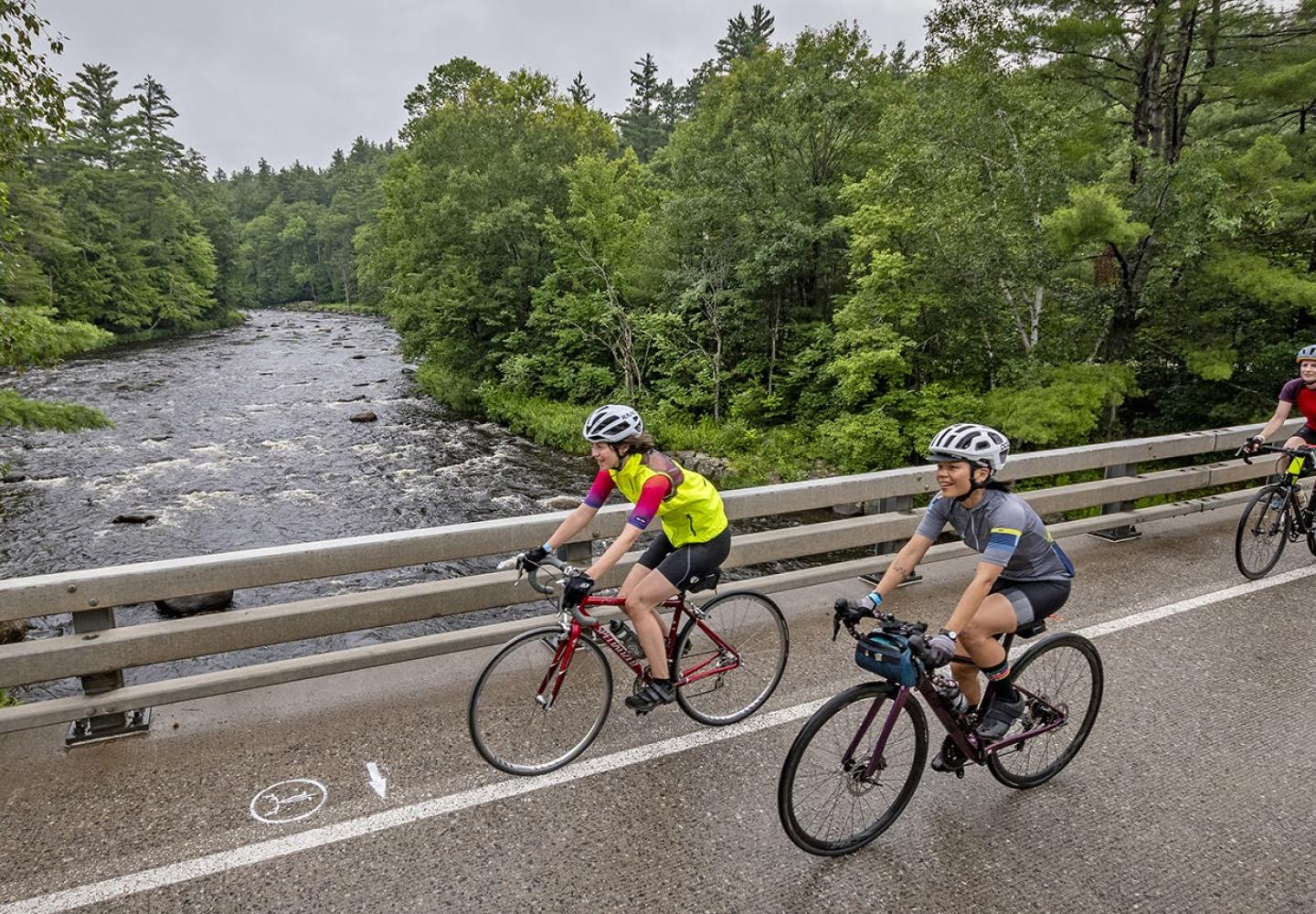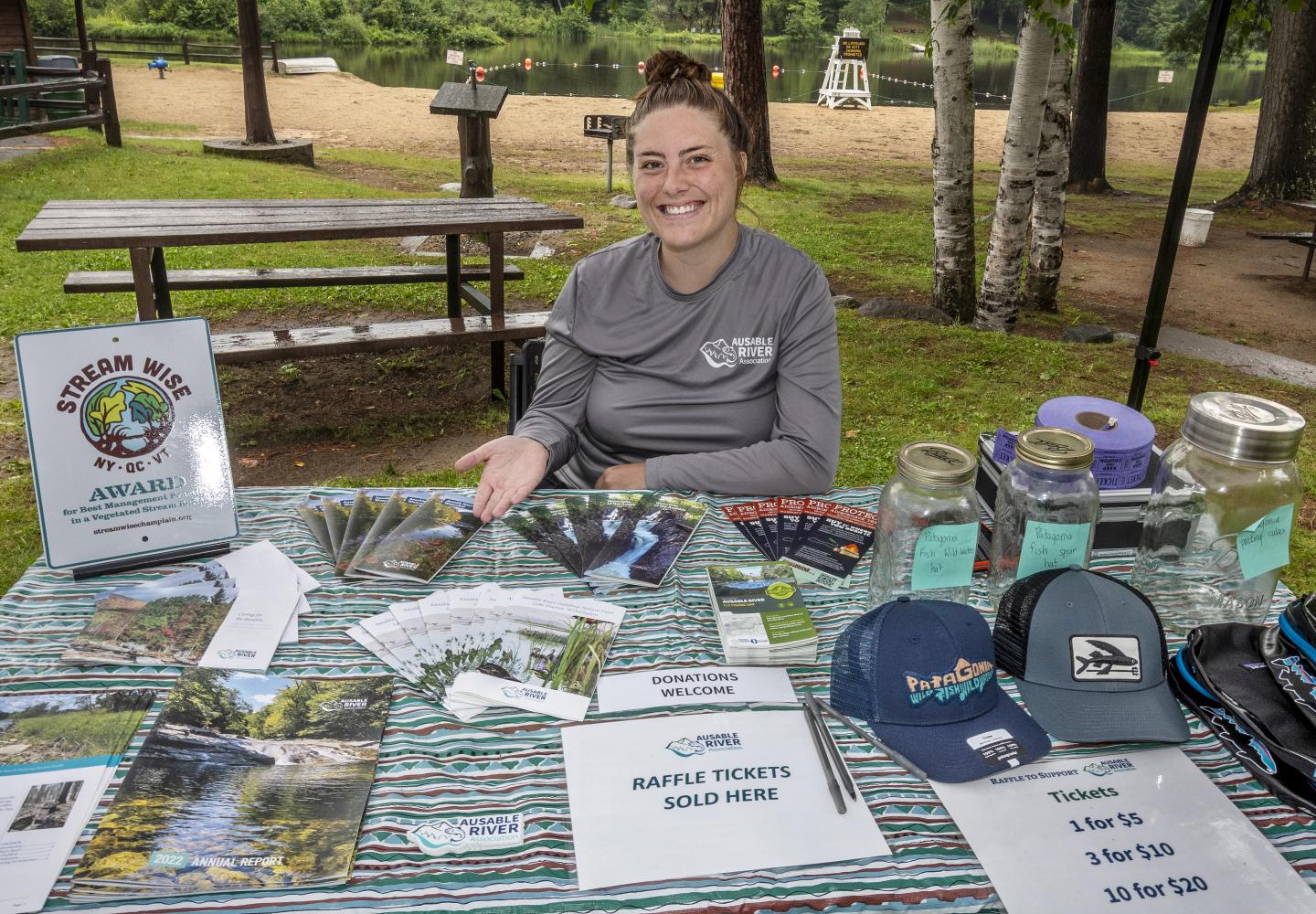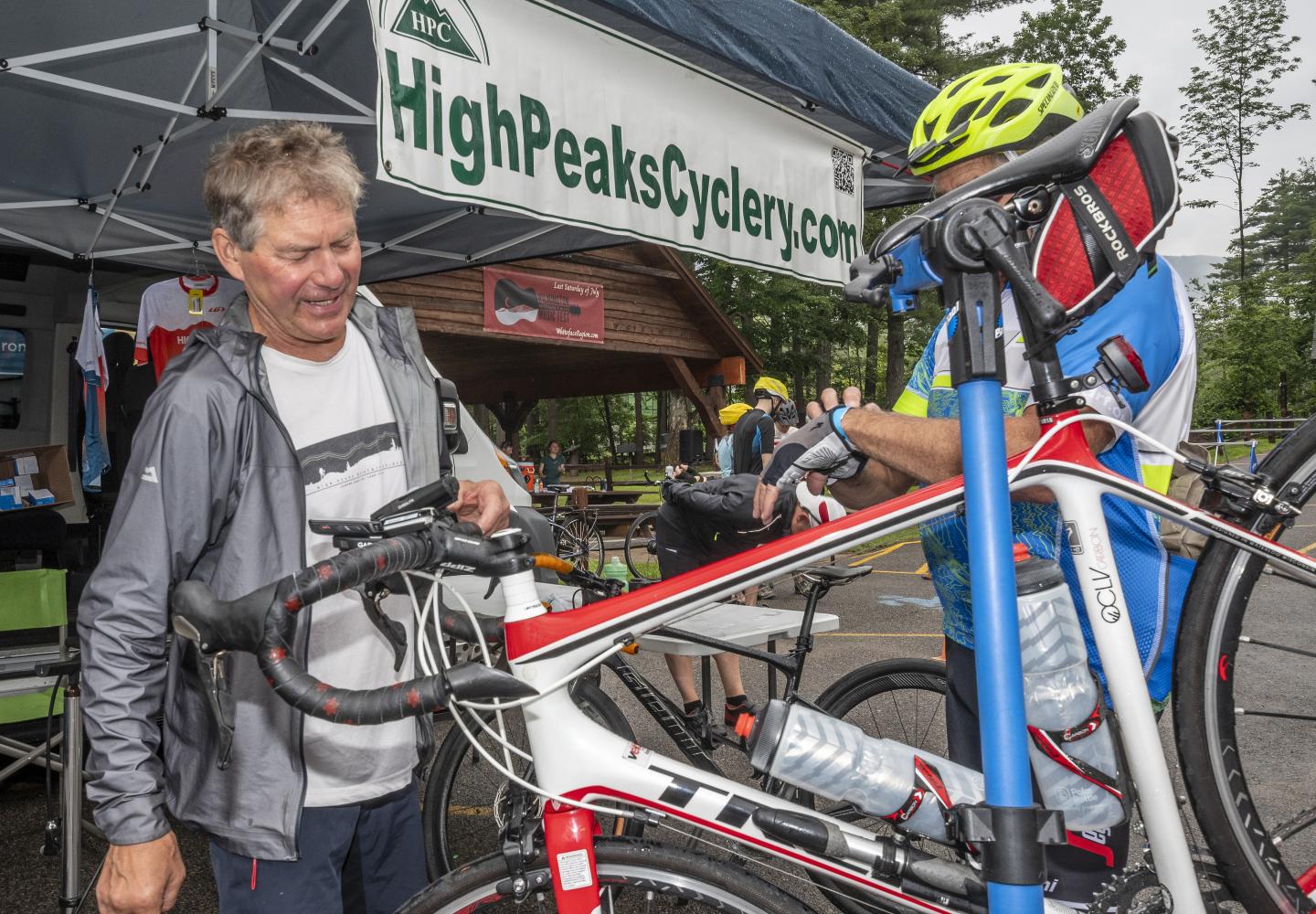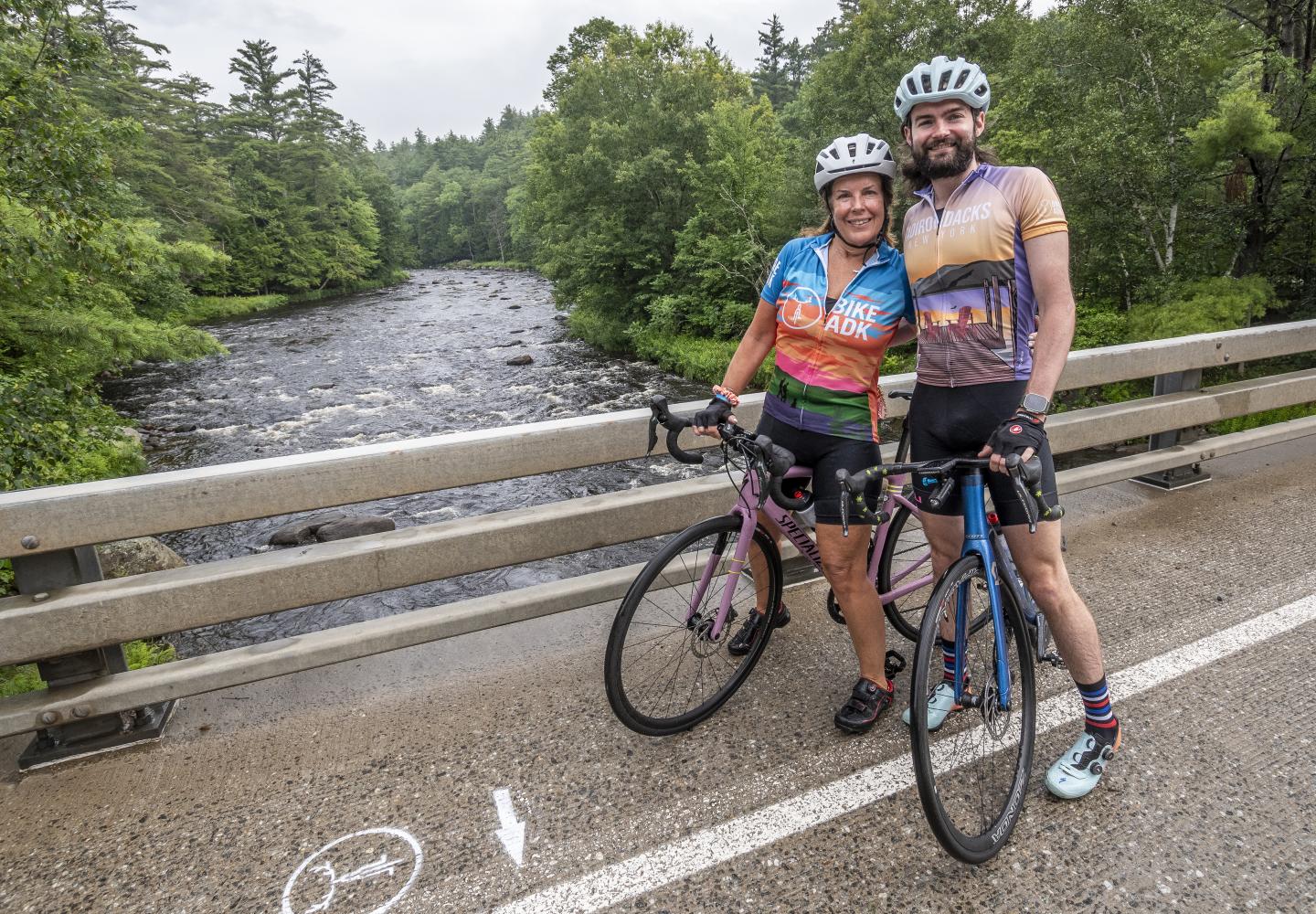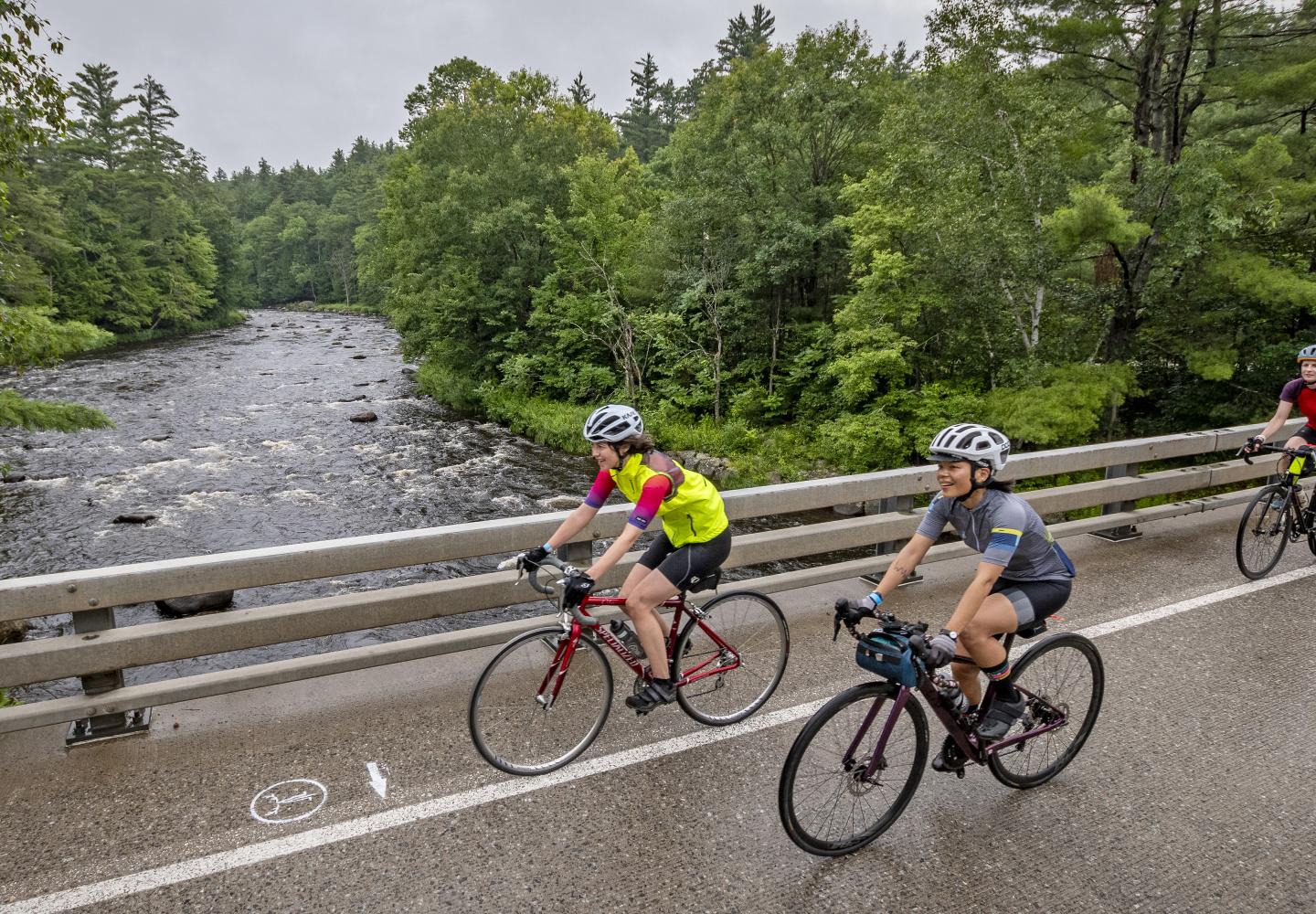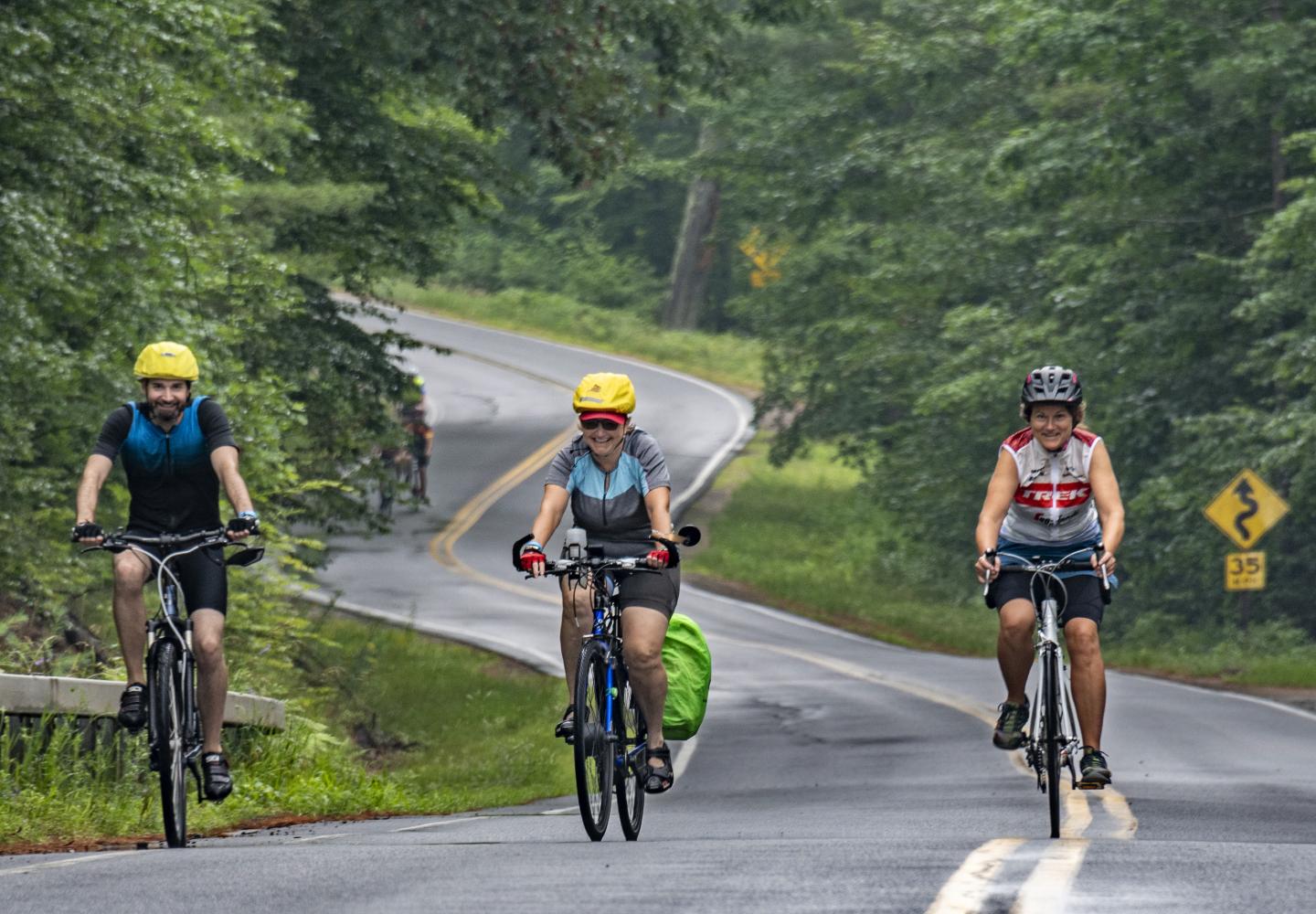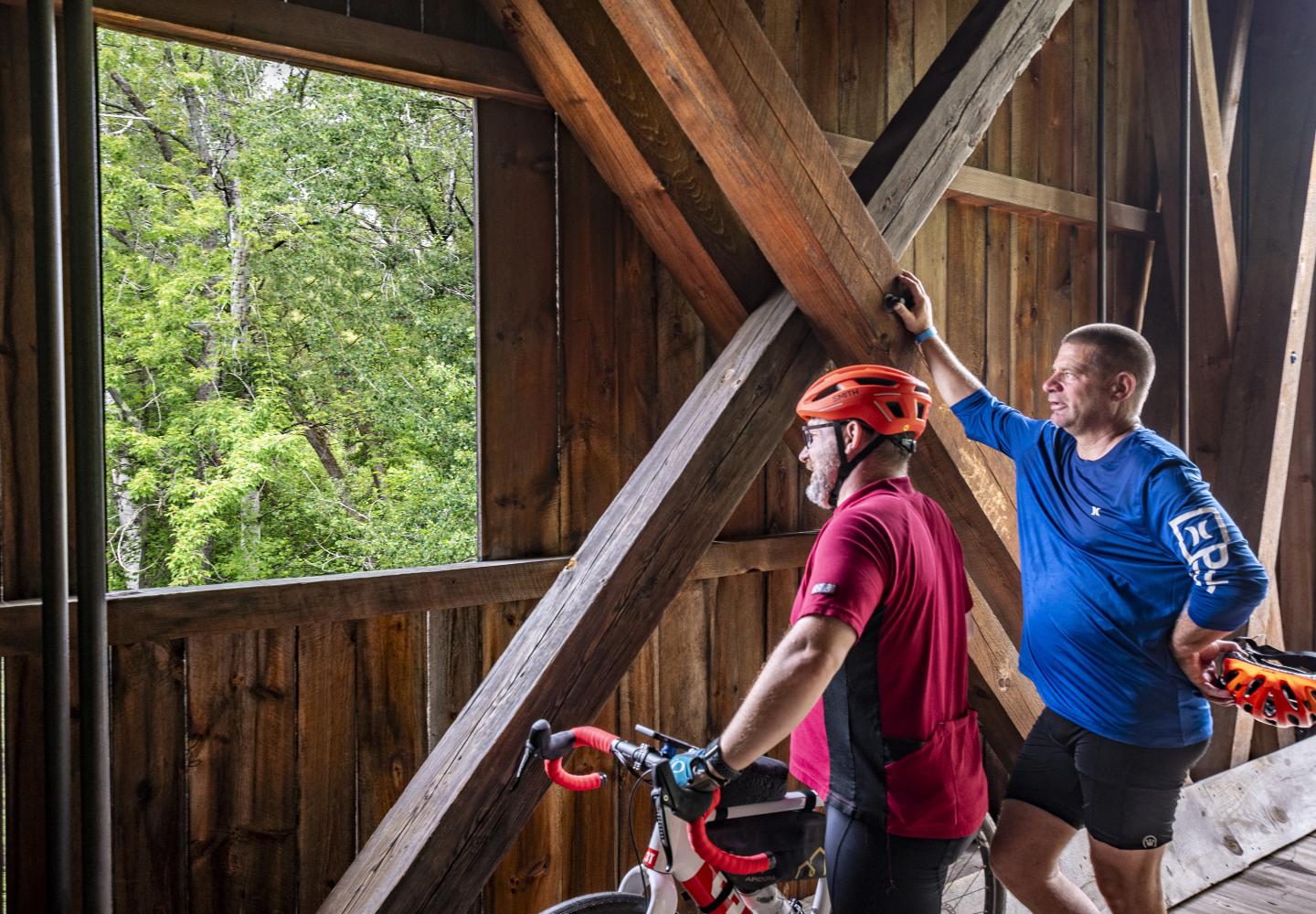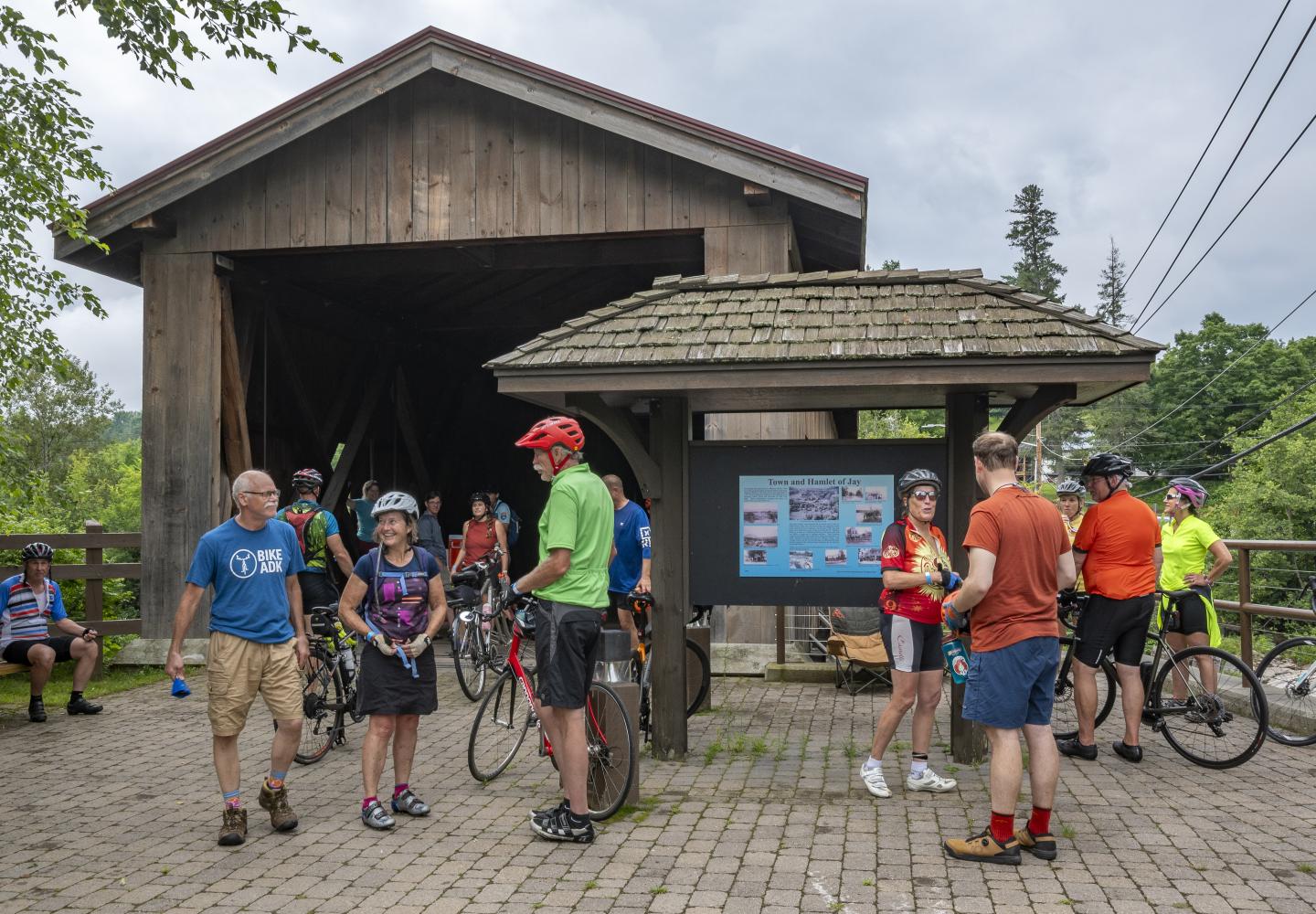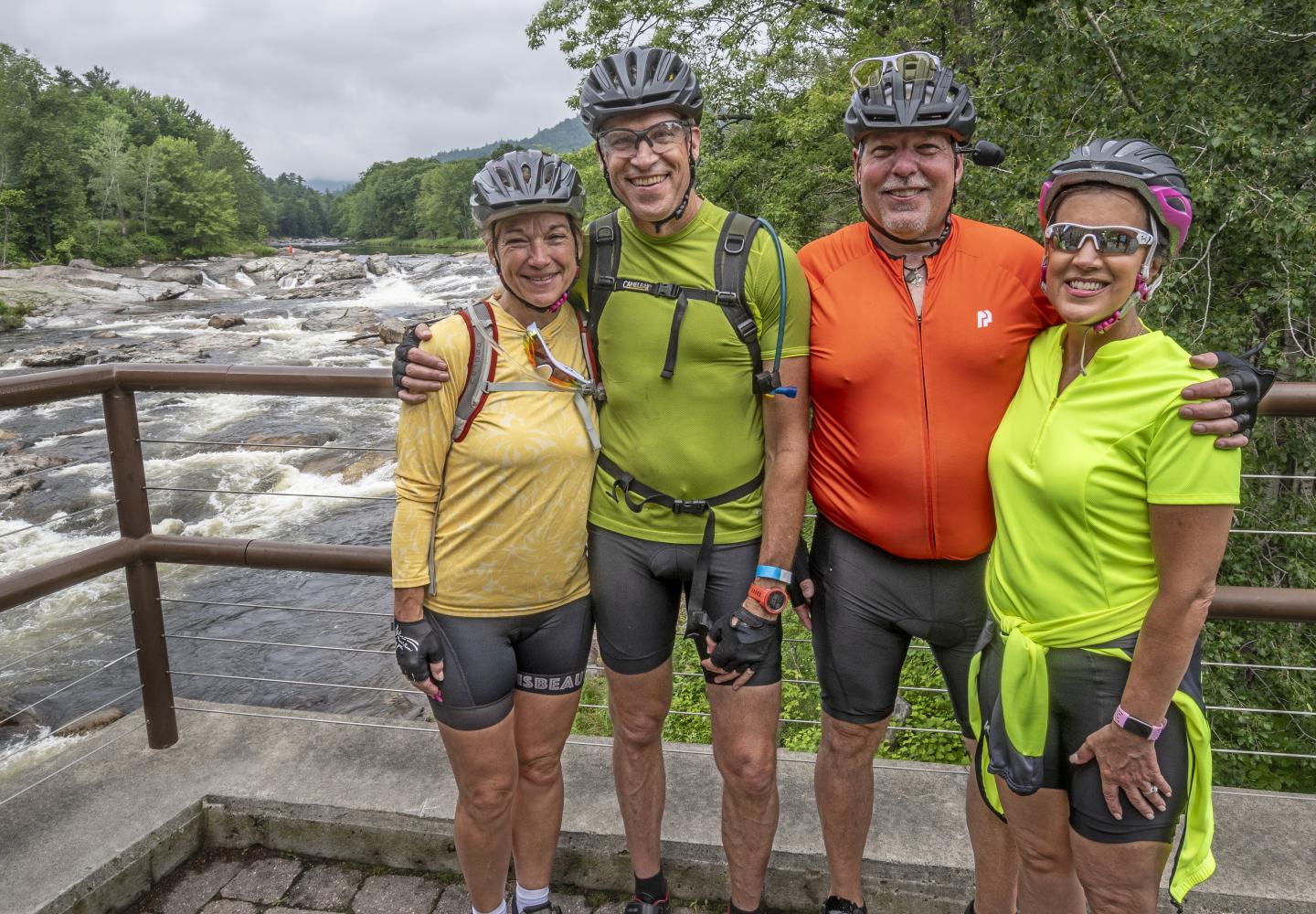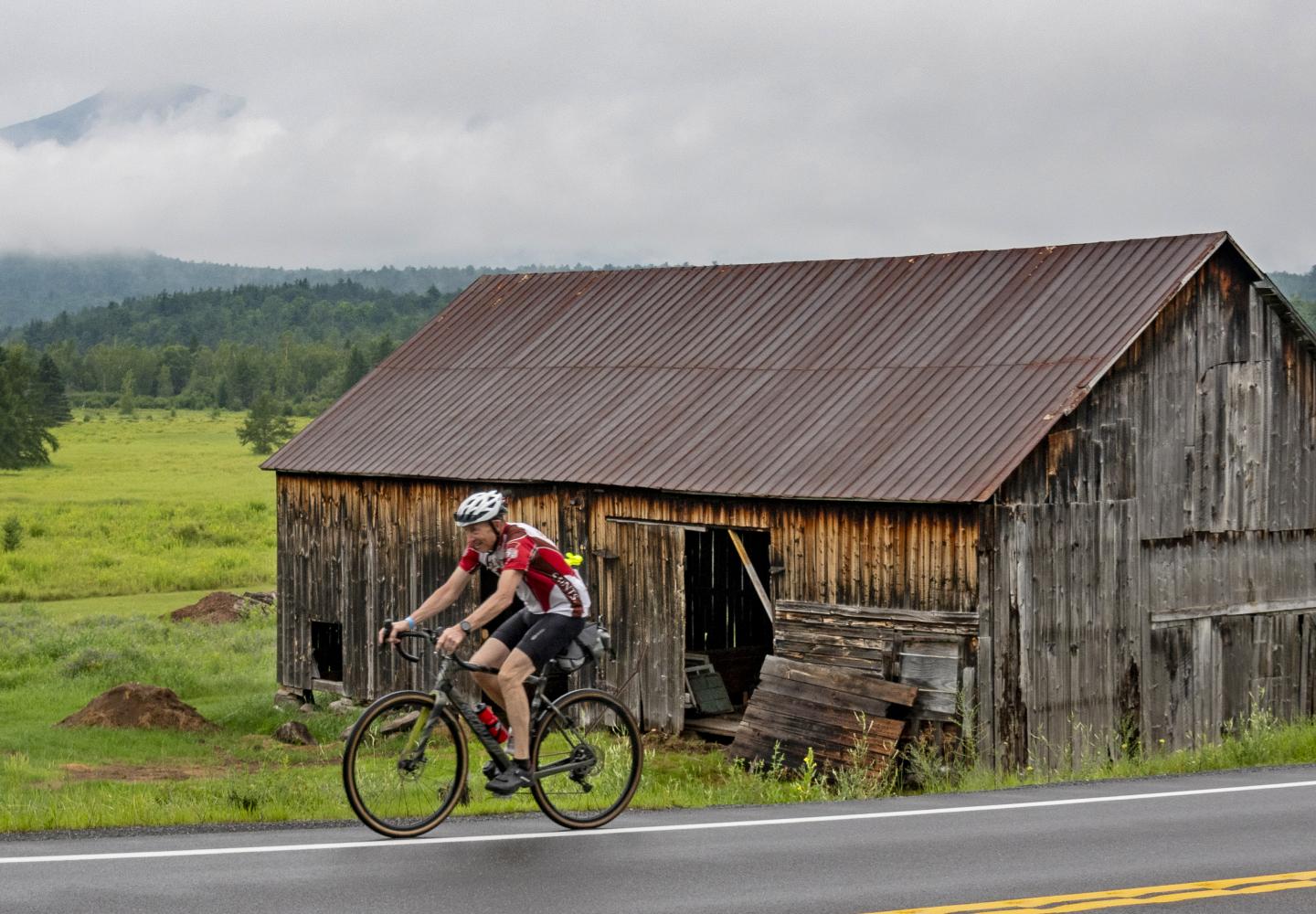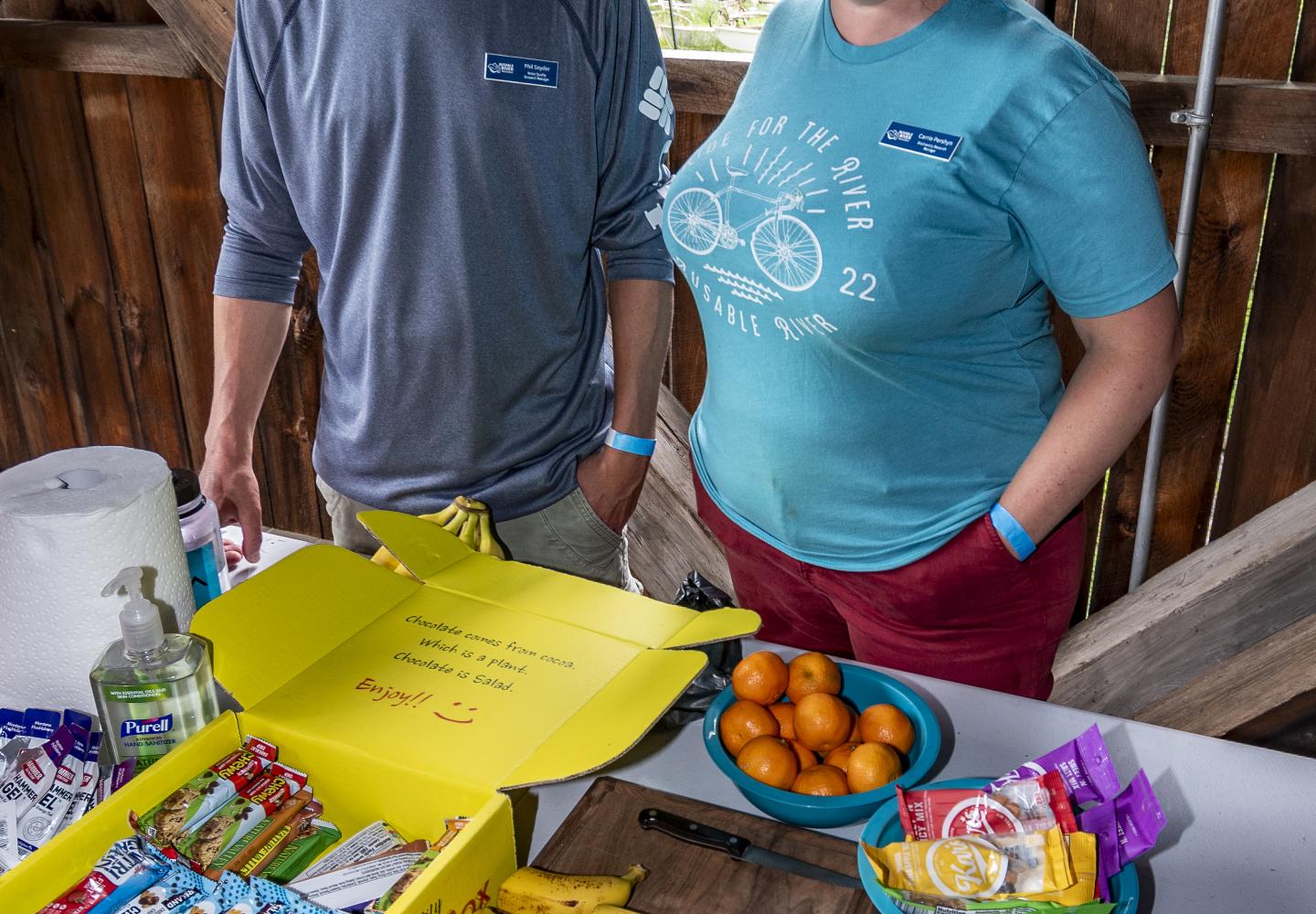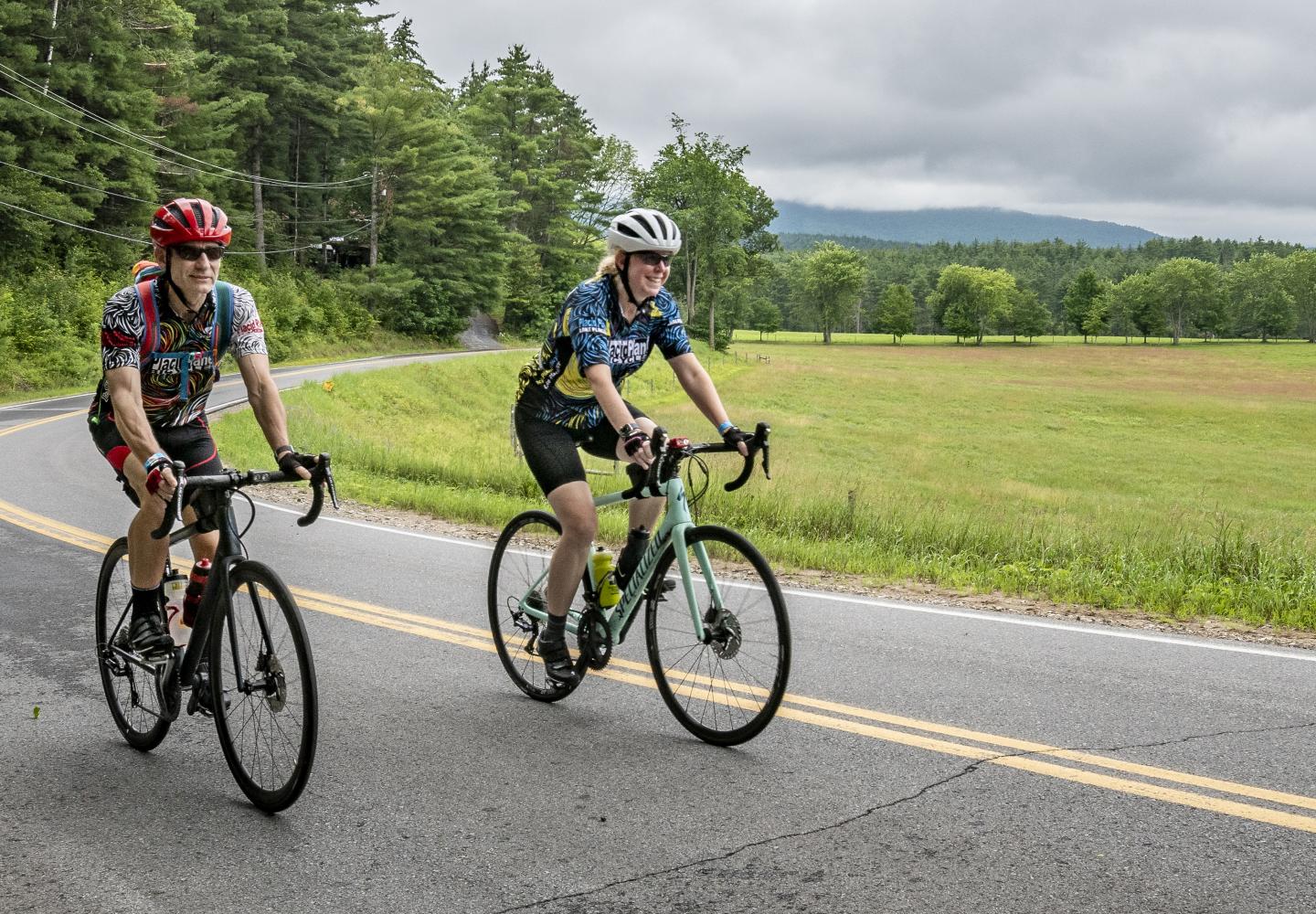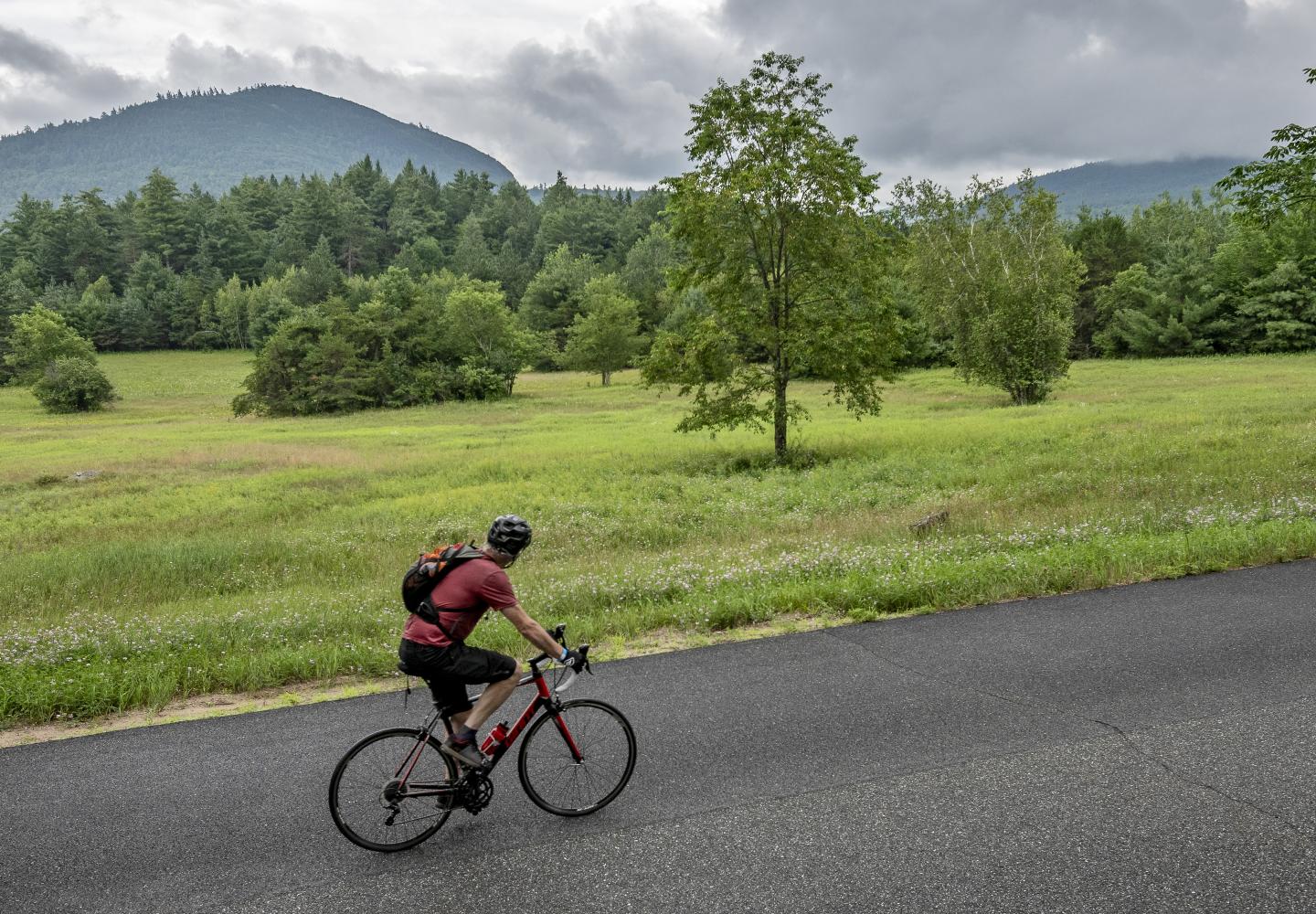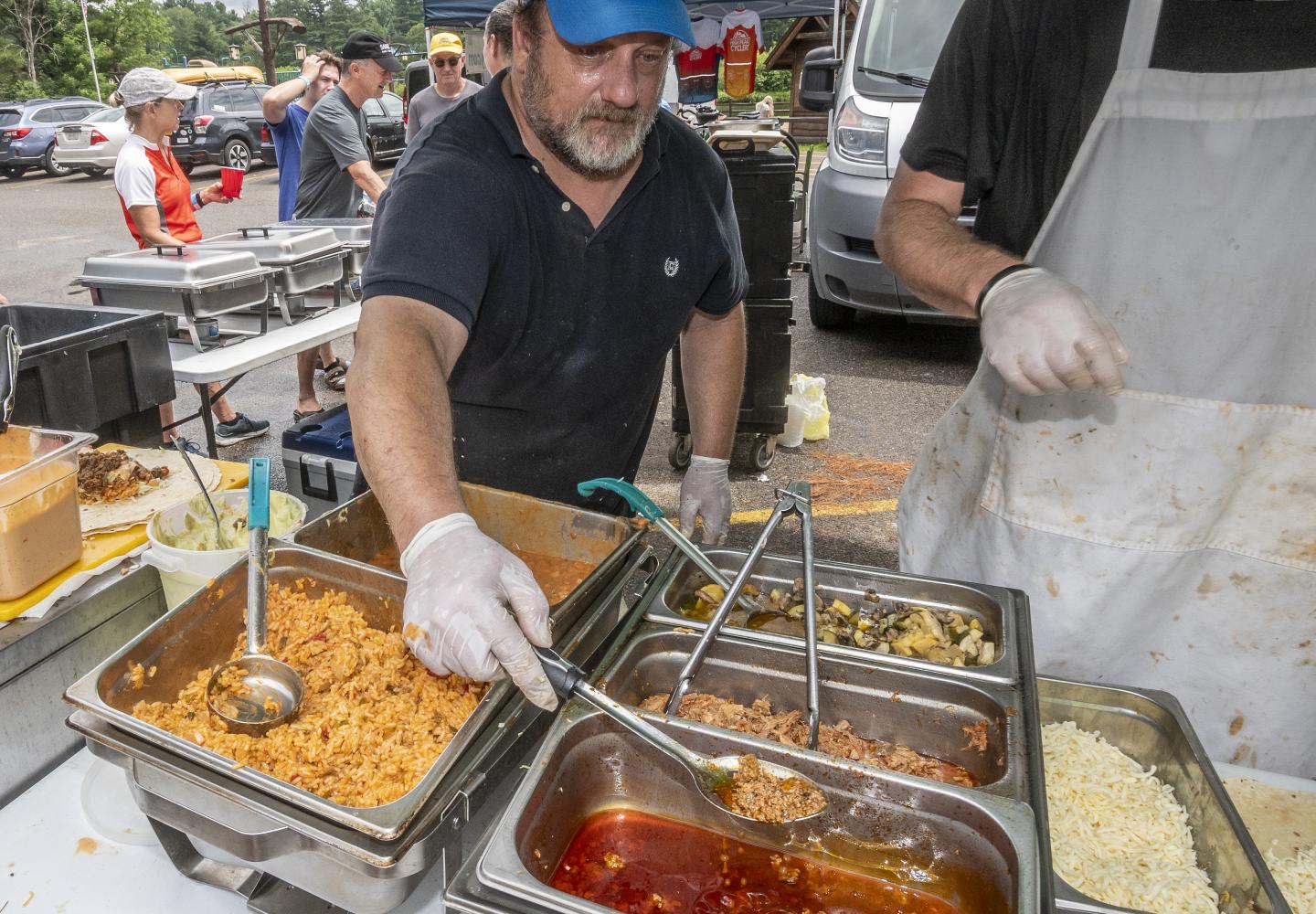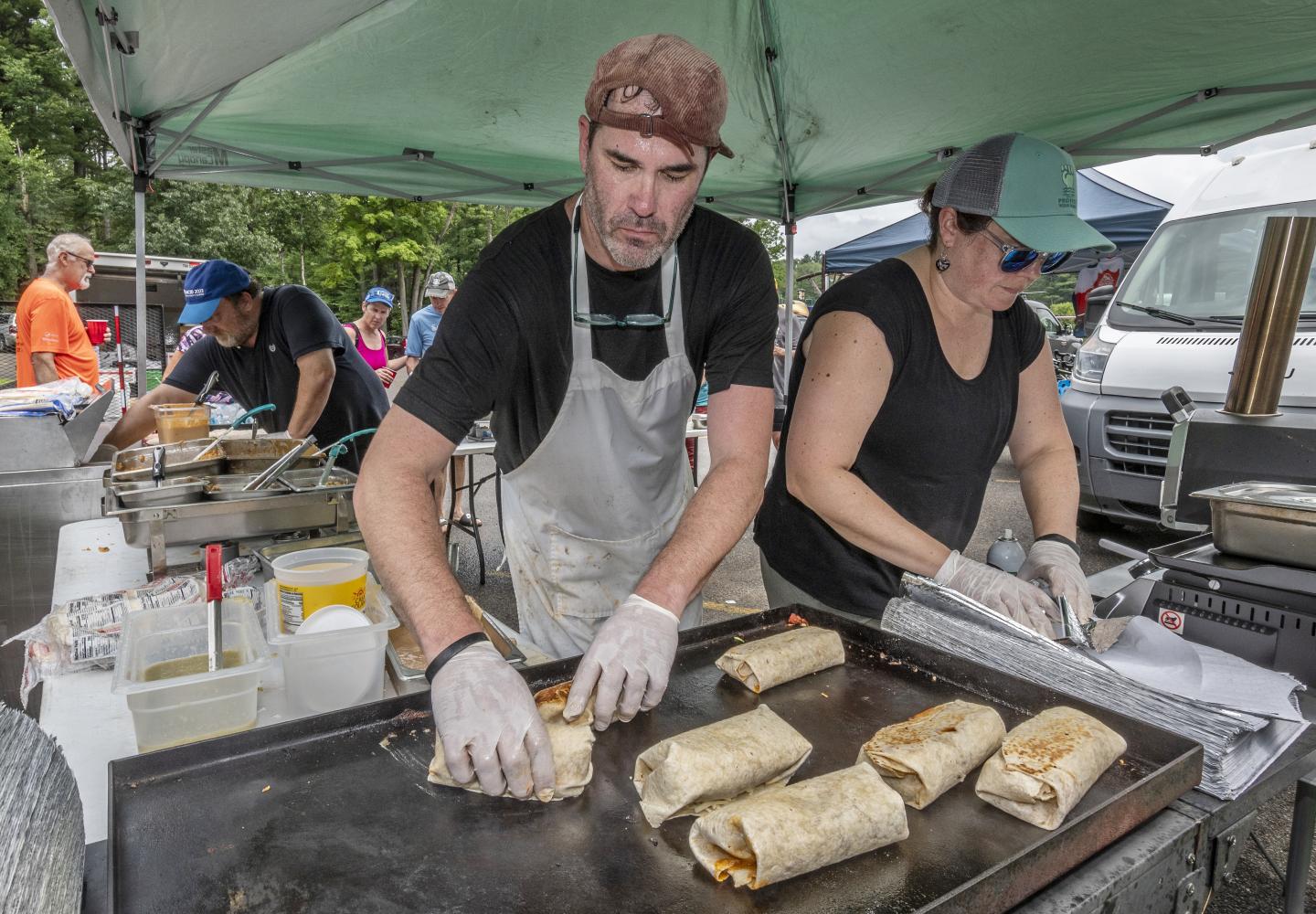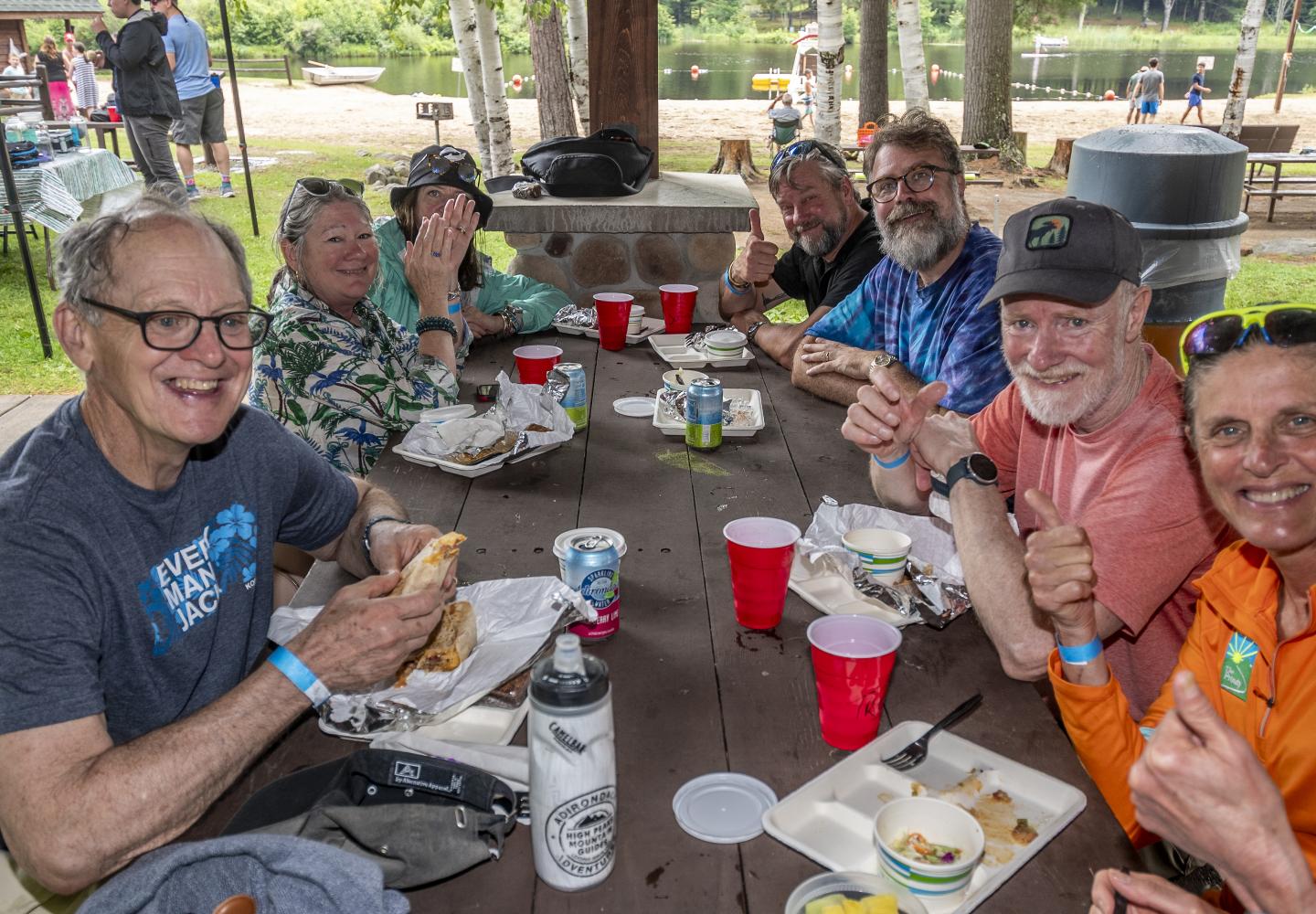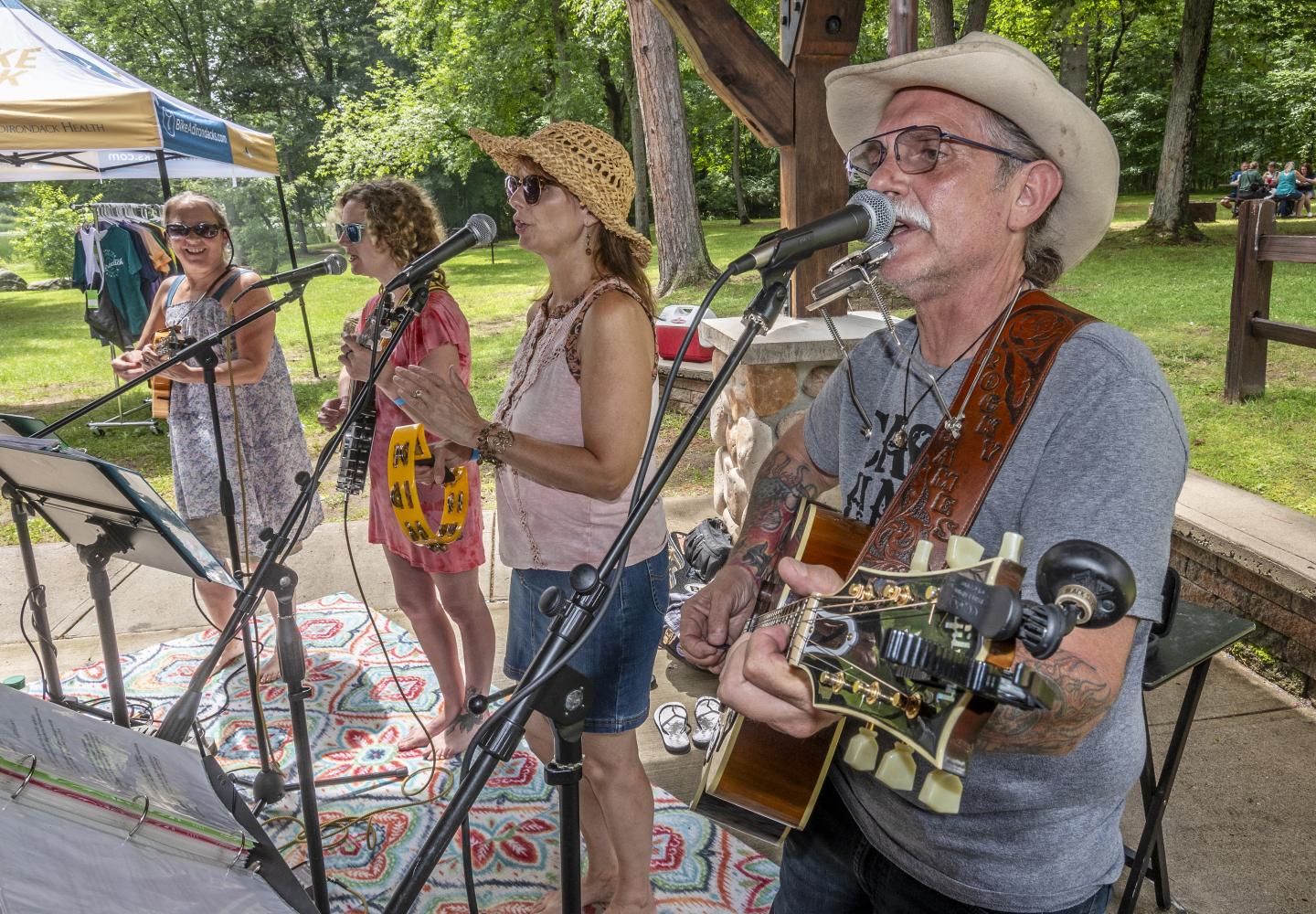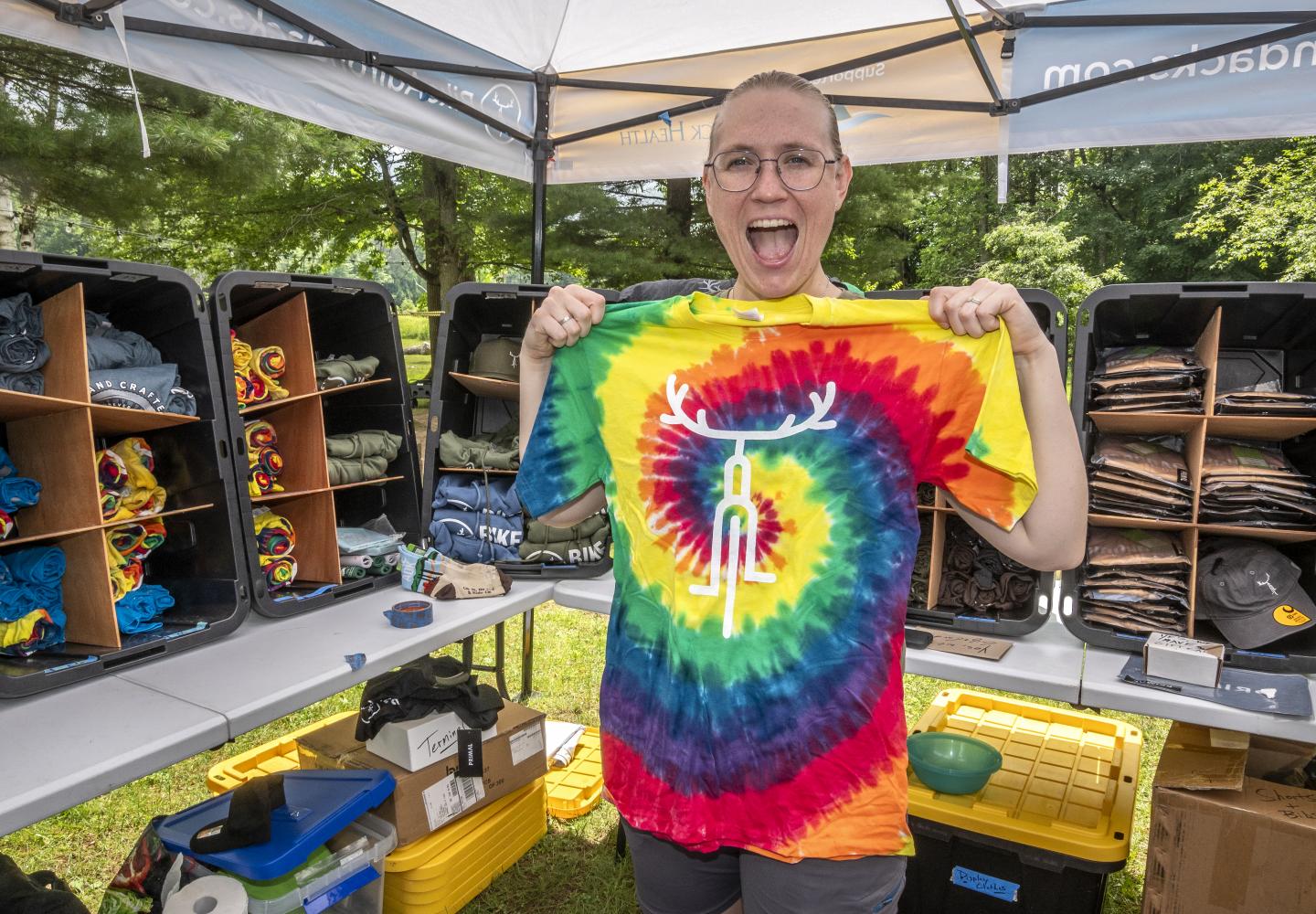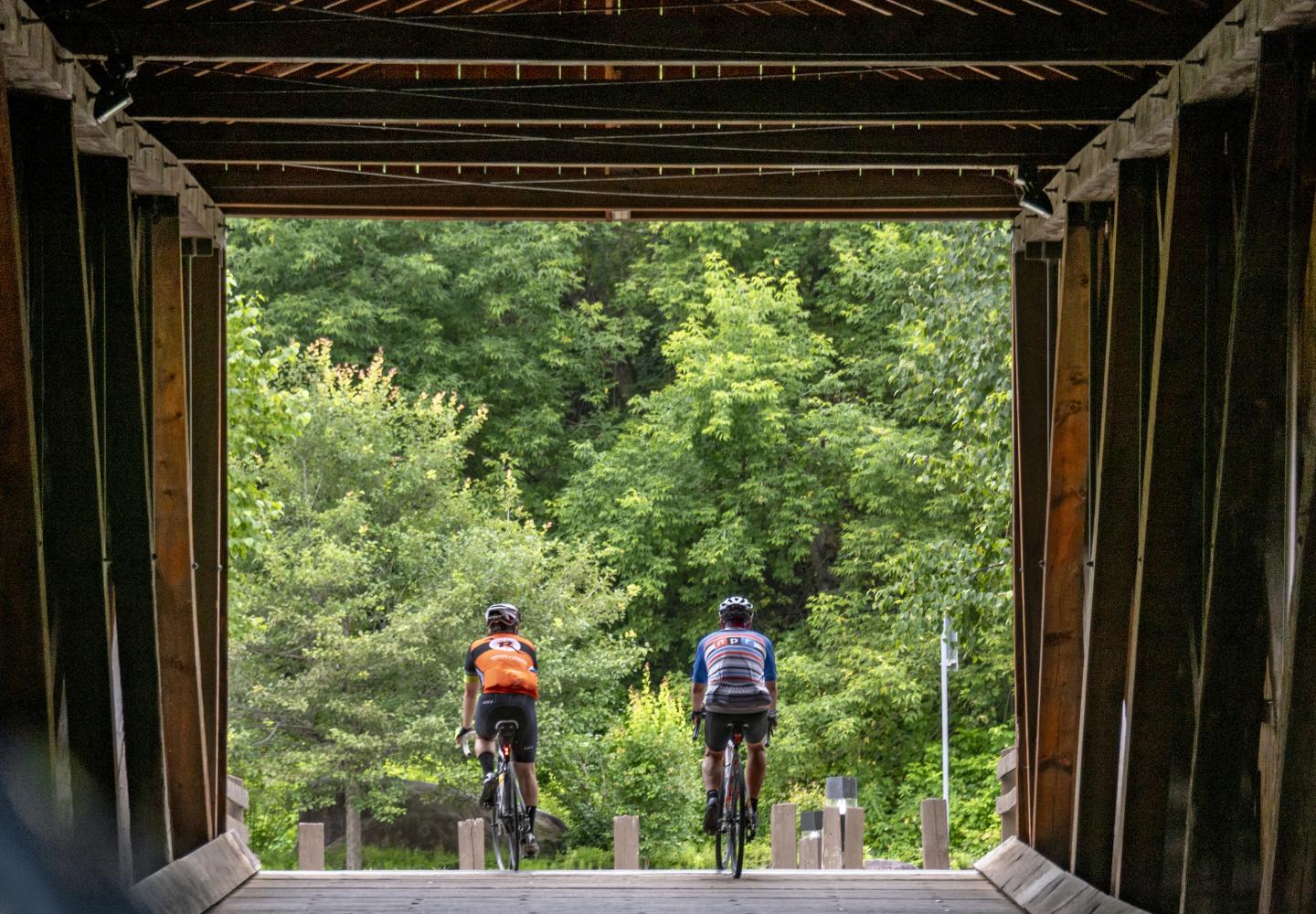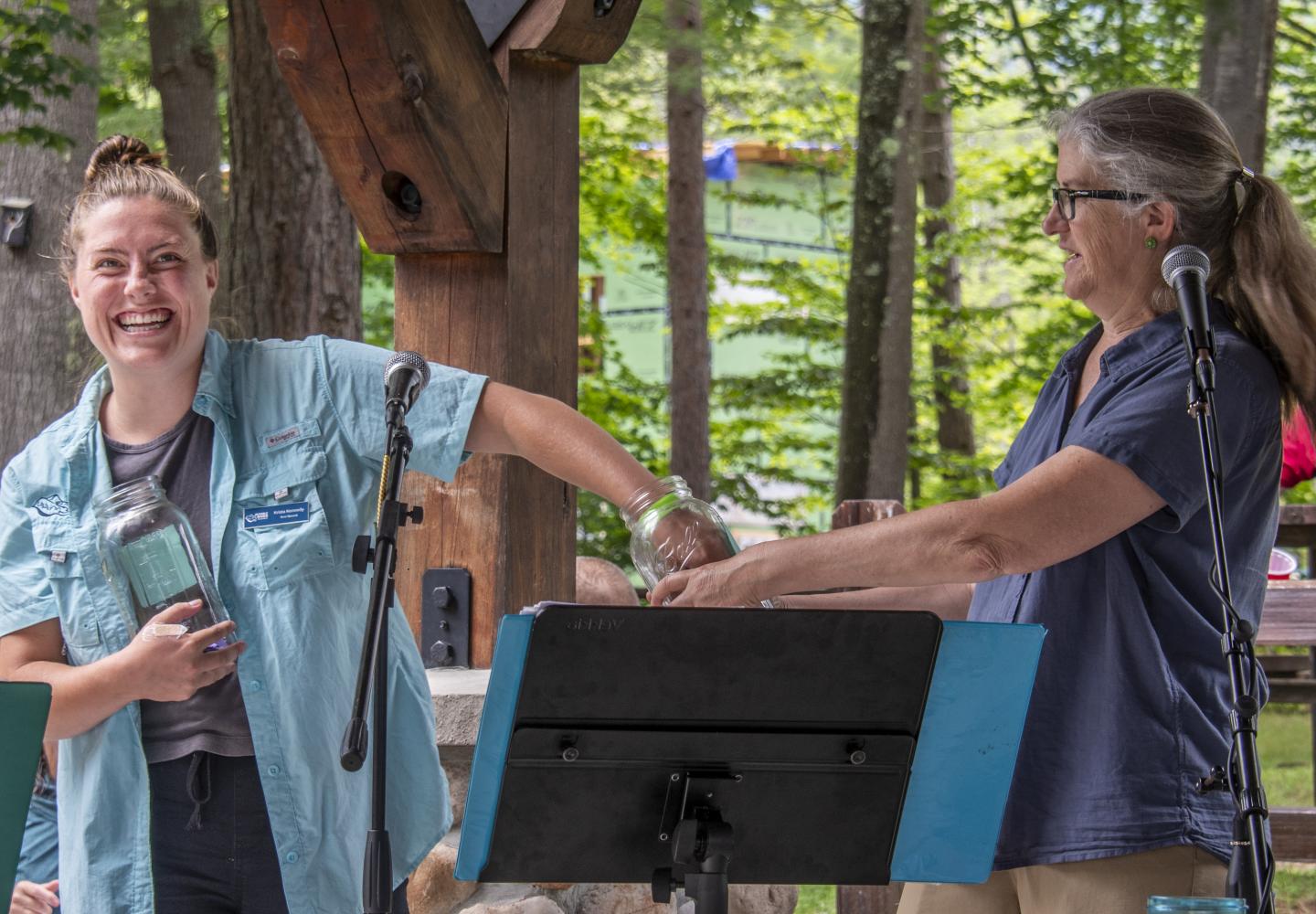This Is Why We Ride for the River
For 12 years, Ride for the River has supported and raised awareness for Ausable River Association. It's also a beautiful ride and a really good time.
The forecast on the day of Ride for the River called for rain, possibly thunderstorms. As I ate breakfast in Saranac Lake, the skies opened up and a deluge poured down. I wondered if the ride would be canceled. At 7 a.m., we cyclists got the news via text from Doug Haney of Bike Adirondacks, the organizer of the event.
“LET’S RIDE FOR THE RIVER! We might get a little wet, but it looks like anything heavy will hold. See you at the Wilmington Town Beach.”
It turned out to be a good call. The rain did hold off, and scores of cyclists enjoyed a wonderful ride while raising money for the Ausable River Association. Afterward, the participants regrouped in Wilmington for burritos, beer and live music by the Midnight Stargazers, an acoustic quartet from Bloomingdale.
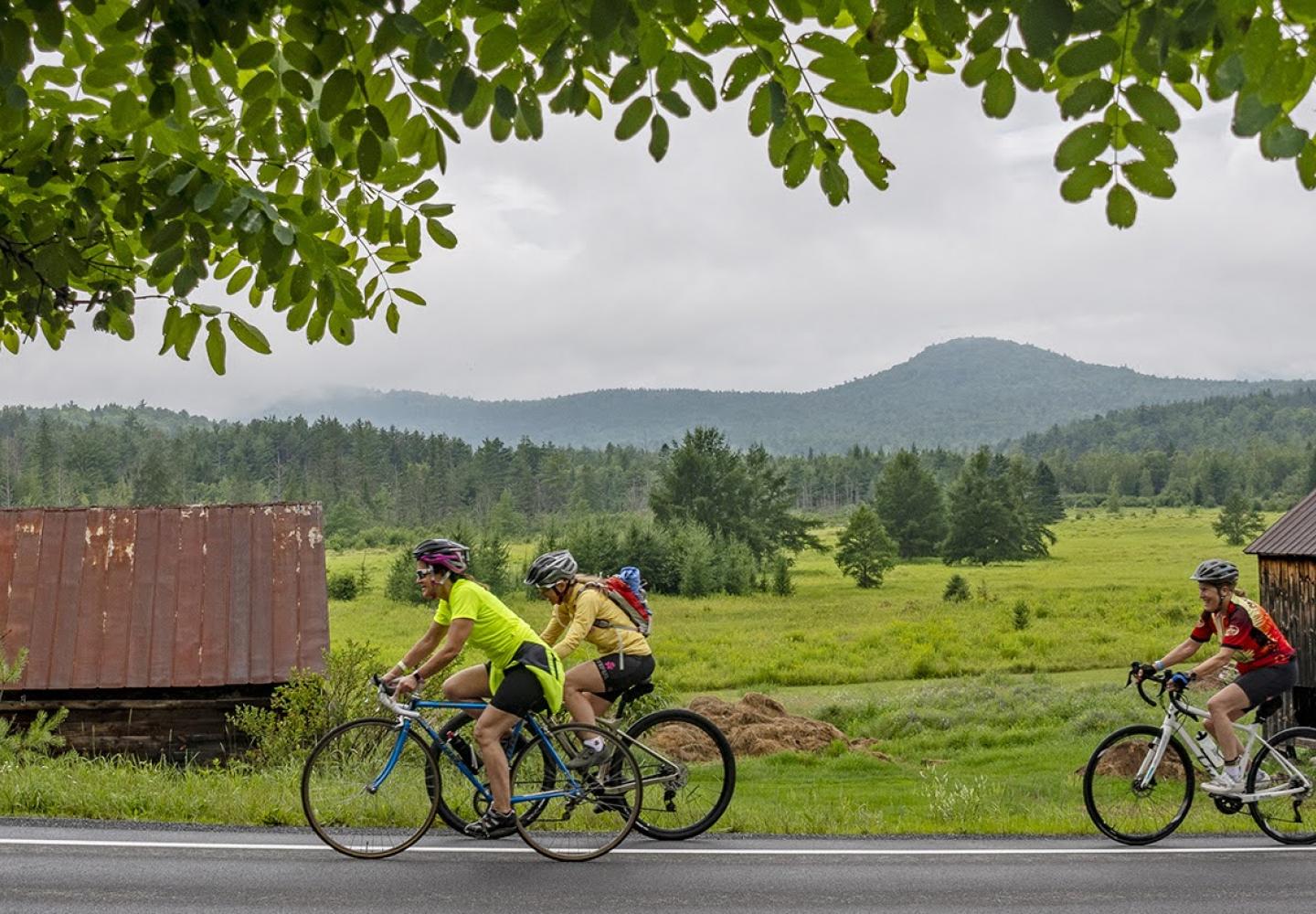
The nonprofit Ausable River Association (AsRA) sponsored the first Ride for the River after Tropical Storm Irene wreaked millions of dollars in damage in the Ausable watershed in 2011. The heavy rains washed out roads and trails and destroyed homes and businesses. Since then, Ride for the River has become an annual event to raise awareness about the river’s ecology and the need to prepare for future storms. Bike Adirondacks has been managing the event for AsRA for the past three years.
Cyclists had a choice of two rides, one about 30 miles, the other about 45 miles. I chose the shorter one, which turned out to be about 33 miles, with 2,140 feet of ascent. For the most part, it stuck to quiet rural roads between Wilmington and Ausable Forks, crossing twice both the West Branch and the East Branch of the Ausable. We delighted in picturesque scenes of fields, streams, woods and peaks. Two highlights were crossing the East Branch on the Jay Covered Bridge and coasting past Asgaard Farm, once the home of Rockwell Kent, the artist and writer. The farm, which Kent painted many times, gave us views of verdant fields with mountains in the background.
Upon reaching Ausable Forks, we headed back toward Wilmington, making a long climb to Lake Eaton--the toughest part of the route. Fortunately, the organizers had set up a rest station at the lake, where we fortified ourselves with fruit and other snacks before getting back in the saddle for the final stretch.
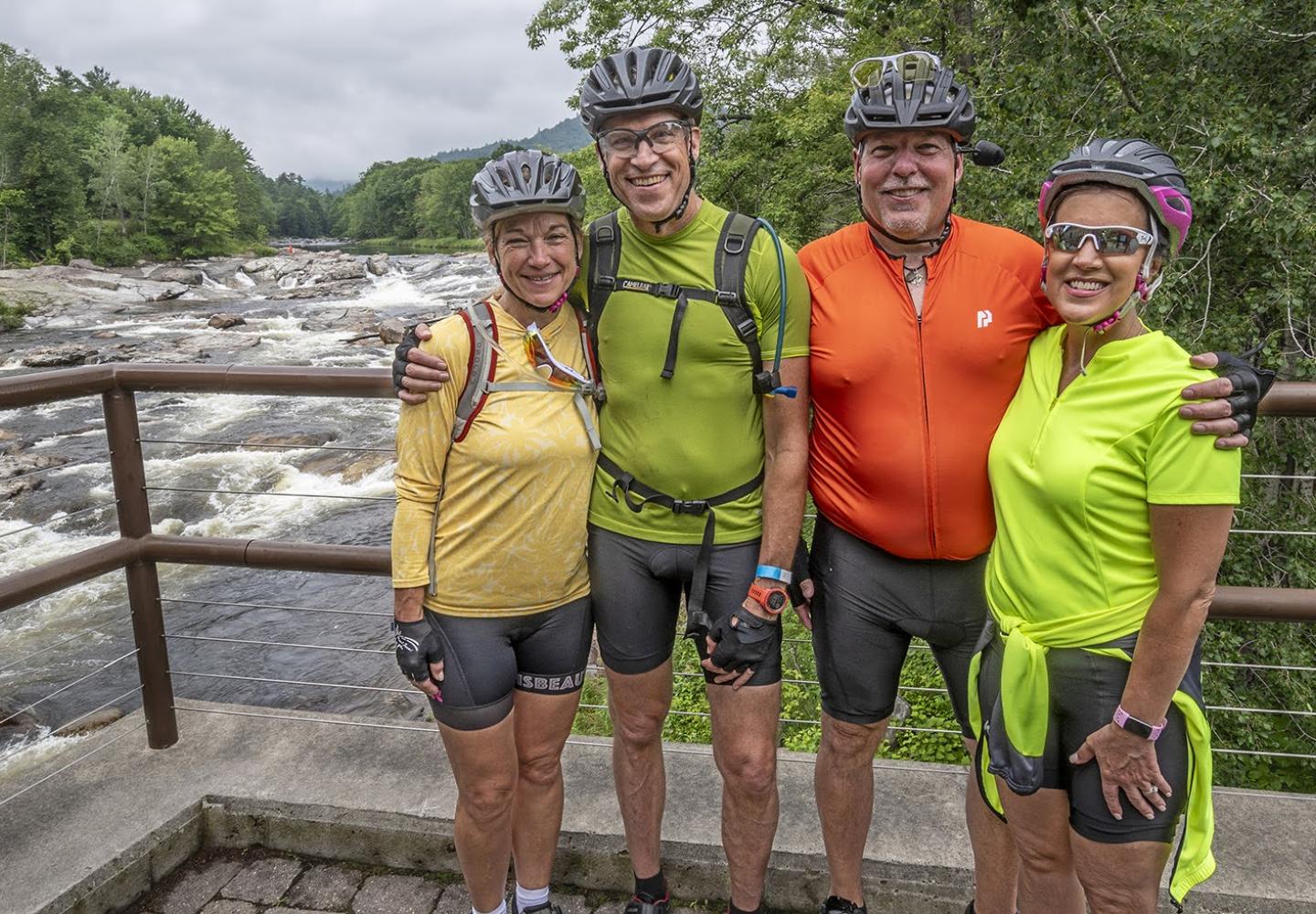
I said the rain held off. That isn’t quite true. Toward the end of my ride there was a mist in the air. Not rain, not even drizzle. Just a fine, cooling mist. After 26 miles of pedaling, I welcomed it as the perfect ending to a challenging but beautiful bike tour.
The rain--or the threat of it--did have its effect. Haney said 150 cyclists had signed up the event, but only 87 people participated in the ride, which took place on Sunday, July 16. However, many cyclists rode the route the day before, taking advantage of the sunshine, and stuck around to enjoy the festivities on Sunday. Most of the participants heralded from upstate cities such as Albany, Syracuse and Rochester. Some came from as far away as Massachusetts, New Jersey and Pennsylvania.
Ride for the River raises money for AsRA via registrations, a raffle and donations to the beer tent. Typically, the event brings in a few thousand dollars. Given the association’s $760,000 budget, that’s a drop in the bucket, but the event’s main goal is to heighten awareness about the river and its problems.
“It’s never been a huge fund-raiser; it’s a community thing for us,” said Kelley Tucker, AsRA’s executive director.
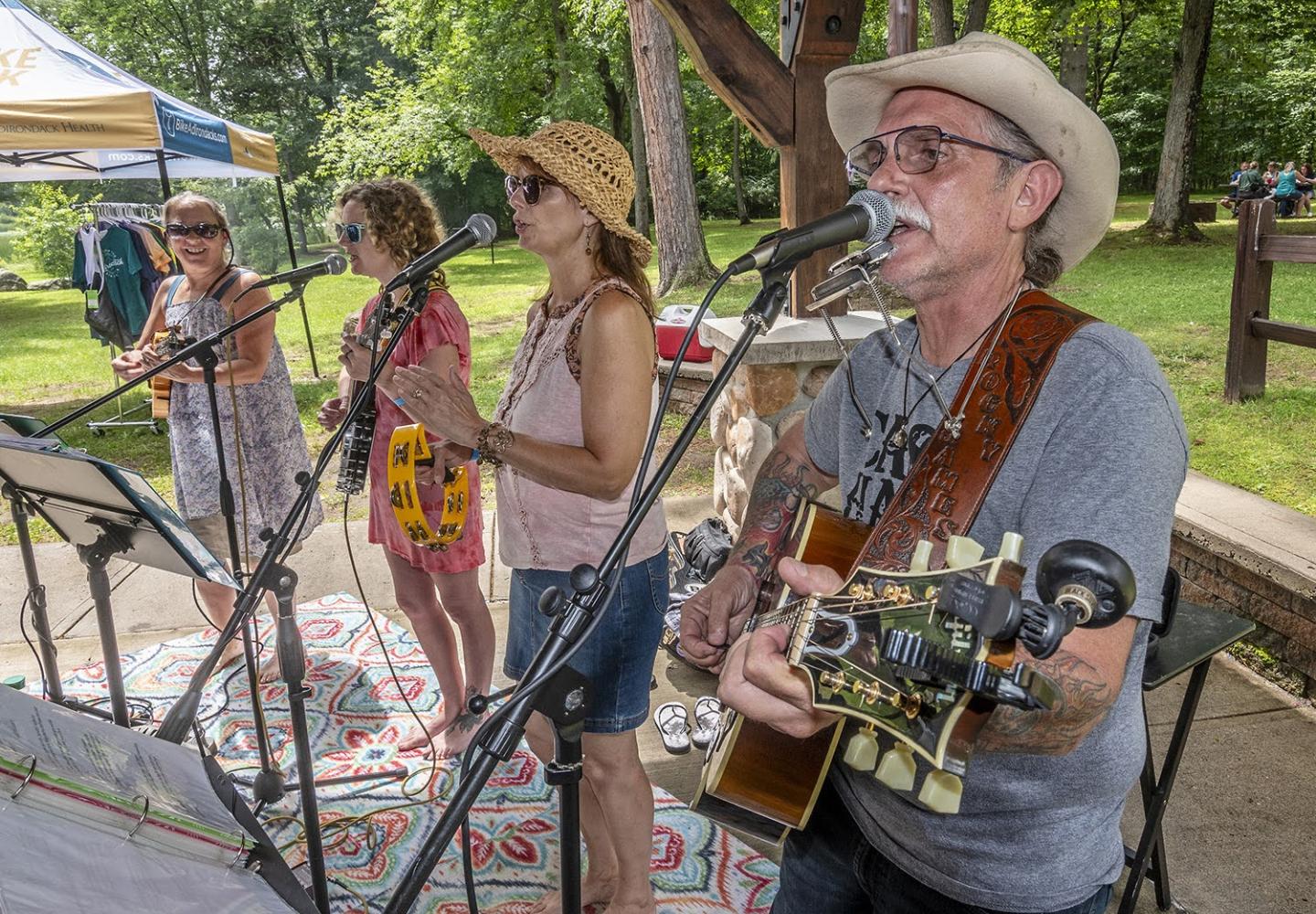
Since Irene, the association has worked to improve the river’s flood resilience. Projects include enlarging culverts, restoring and reshaping river channels, and removing an unneeded dam.
Coincidentally, Ride for the River occurred on a weekend when communities in Vermont, the central Adirondacks and downstate New York were struggling to recover from torrential rains. The rains did not hit the Ausable River valley nearly as hard. “We got nothing,” Tucker said. “The water didn’t even get to flood-warning stage.”
Had the heavy rain not missed the Ausable, however, the river might have flooded homes and businesses and washed out roads. “We probably would have seen water coming over banks in ways that are unpredictable,” Tucker said.
That just means the work of the Ausable River Association is not finished. And so cyclists can look forward to another Ride for the River next year.
GALLERY: 2023 Ride for the River
Images by Dave Kraus
